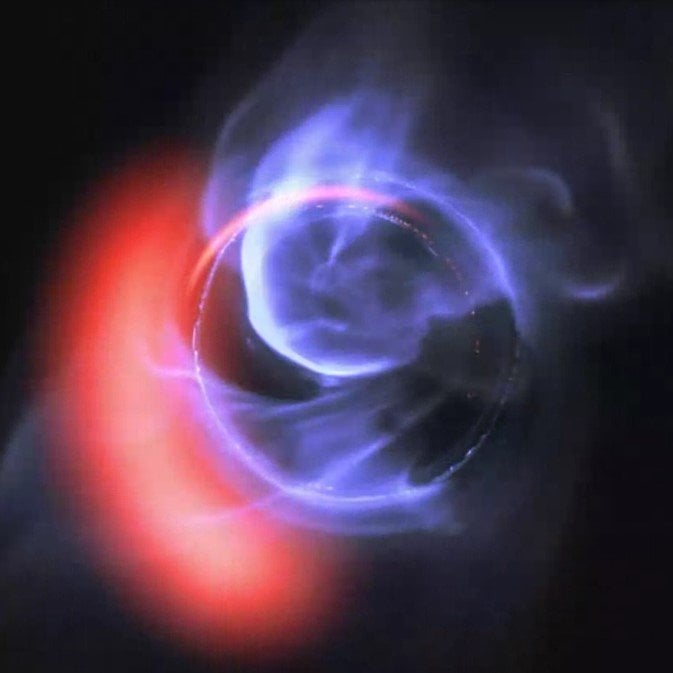Many galaxies host a monster-size black hole in their center, and the Milky Way is no exception. Astronomers observed what they call a “supermassive black hole” at the center of the Milky Way as it pulls gas blobs into its vortex at 30% of the speed of light.
This was the first time they were able to observe the gas being pulled in from such a close proximity. European Southern Observatory scientists say they captured the most detailed observations of material being pulled into a black hole. As the gas blobs move toward the black hole, they cause powerful bursts of radiation, which researchers detected using the GRAVITY, a device implemented on the Very Large Telescope in Chile. The team published their findings in the Journal of Astronomy & Astrophysics on Wednesday.
“It’s mind-boggling to actually witness material orbiting a massive black hole at 30 percent of the speed of light,” Oliver Pfuhl of the Max Planck Institute for Extraterrestrial Physics (MPE) said in a statement. “GRAVITY’s tremendous sensitivity has allowed us to observe the accretion processes in real time in unprecedented detail.”
Researchers said the supermassive black hole at the center of the Milky Way is also known as Sagittarius A*, which is pronounced “Sagittarius A-star.” It’s a point of no return for any material in that gets too close to the black hole. Sagittarius A* is believed to be a supermassive black hole with a mass 4 million the times of the sun and located roughly 25,000 light-years from Earth.
“This always was one of our dream projects but we did not dare to hope that it would become possible so soon,” lead author and MPE scientist Reinhard Genzel said.
The team considered the long-standing assumption that Sagittarius A* is a supermassive black hole.
“The result is a resounding confirmation of the massive black hole paradigm,” Genzel added
For the study, the European Southern Observatory created an animation of the gas blobs and flares being sucked into the supermassive black hole at the center of the Milky Way.
It’s important to note that the animation is not a photograph or a real-time depiction of what is happening at the center of our galaxy. Instead, it’s a visual simulation made based on the data collected by GRAVITY and other telescopes.
“If you were close enough to observe these flares, you’d be in a lot of trouble,” astrophysicist and University of Manchester fellow Tana Joseph, who wasn’t part of the study, told Business Insider. “We would see extremely bright flashes of optical light, and there would be lots of high energy radiation, like gamma rays and X-rays, that would be very damaging to our bodies.”





